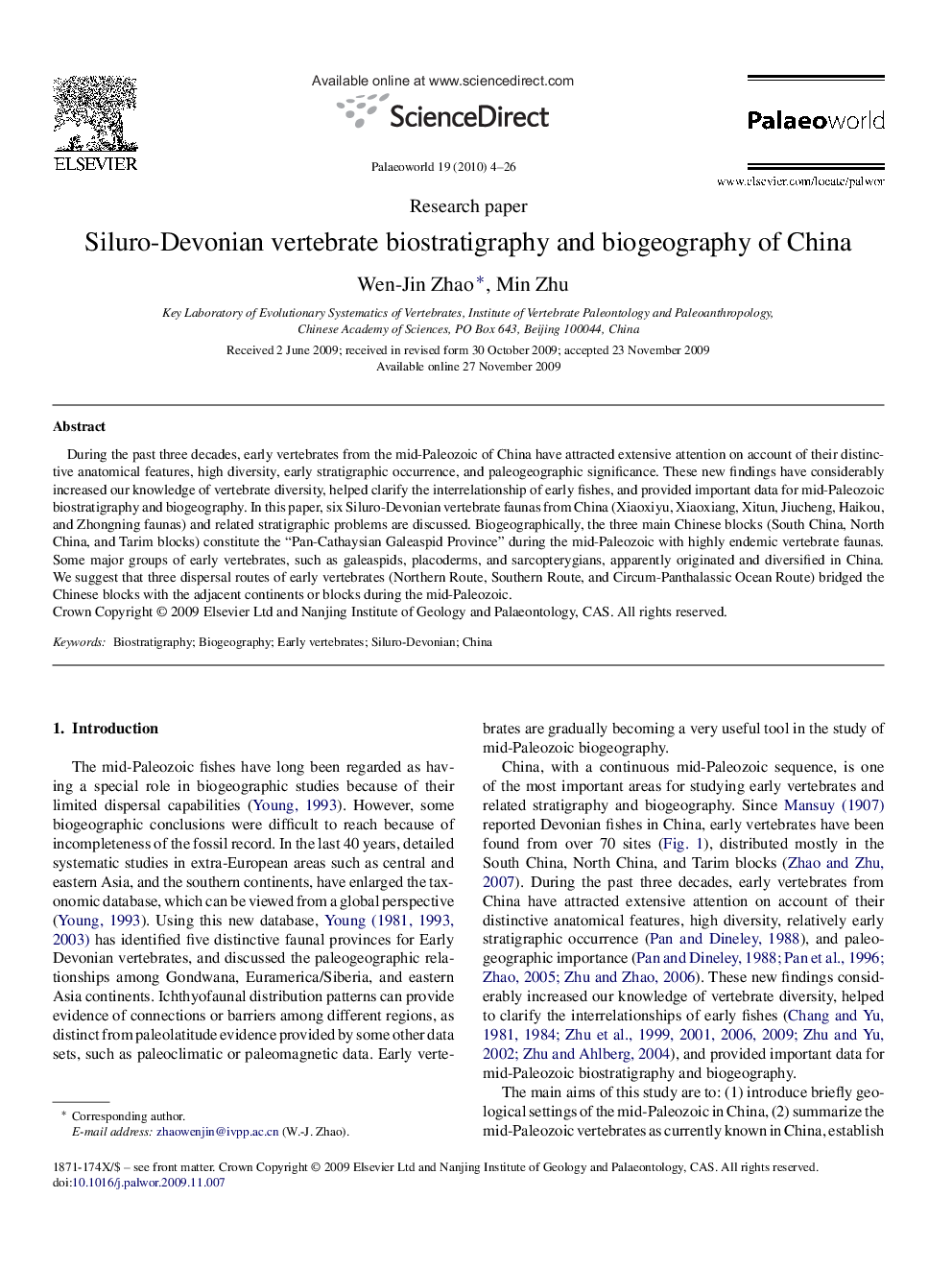| Article ID | Journal | Published Year | Pages | File Type |
|---|---|---|---|---|
| 4749896 | Palaeoworld | 2010 | 23 Pages |
During the past three decades, early vertebrates from the mid-Paleozoic of China have attracted extensive attention on account of their distinctive anatomical features, high diversity, early stratigraphic occurrence, and paleogeographic significance. These new findings have considerably increased our knowledge of vertebrate diversity, helped clarify the interrelationship of early fishes, and provided important data for mid-Paleozoic biostratigraphy and biogeography. In this paper, six Siluro-Devonian vertebrate faunas from China (Xiaoxiyu, Xiaoxiang, Xitun, Jiucheng, Haikou, and Zhongning faunas) and related stratigraphic problems are discussed. Biogeographically, the three main Chinese blocks (South China, North China, and Tarim blocks) constitute the “Pan-Cathaysian Galeaspid Province” during the mid-Paleozoic with highly endemic vertebrate faunas. Some major groups of early vertebrates, such as galeaspids, placoderms, and sarcopterygians, apparently originated and diversified in China. We suggest that three dispersal routes of early vertebrates (Northern Route, Southern Route, and Circum-Panthalassic Ocean Route) bridged the Chinese blocks with the adjacent continents or blocks during the mid-Paleozoic.
